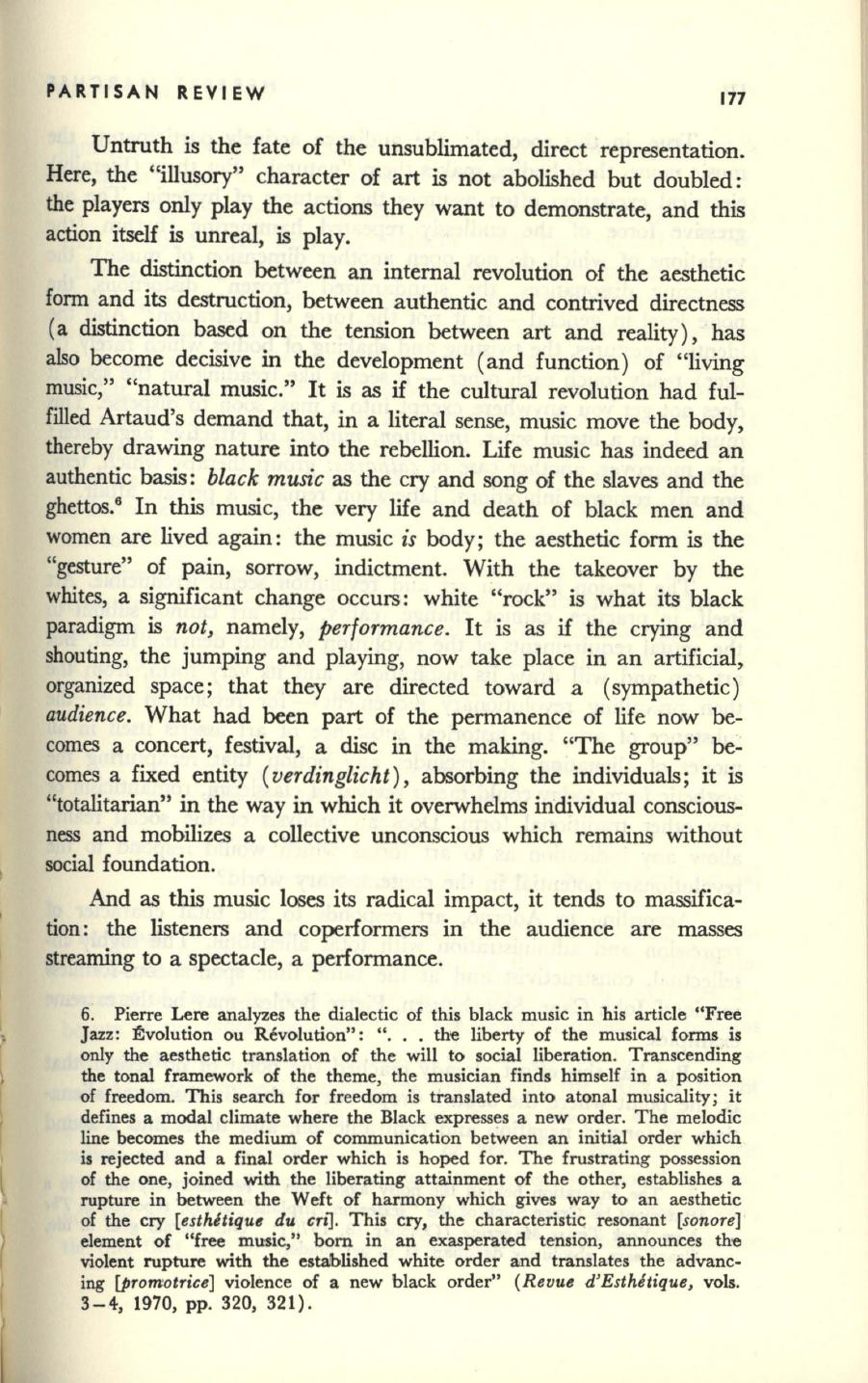
PARTISAN REVIEW
177
Untruth is the fate of the unsublimated, direct representation.
Here, the "illusory" character of art is not abolished but doubled:
the players only play the actions they want to demonstrate, and this
action itself is unreal, is play.
The distinction between an internal revolution of the aesthetic
fonn and its destruction, between authentic and contrived directness
(a distinction based on the tension between art and reality), has
also become decisive in the development (and function) of "living
music," "natural music." It is as if the cultural revolution had ful–
filled Artaud's demand that, in a literal sense, music move the body,
thereby drawing nature into the rebellion. Life music has indeed an
authentic basis:
black music
as the cry and song of the slaves and the
ghettos.
6
In
this
music, the very life and death of black men and
women are lived again: the music
is
body; the aesthetic form is the
"gesture" of pain, sorrow, indictment. With the takeover by the
whites, a significant change occurs: white "rock" is what its black
paradigm is
not,
namely,
performance.
It
is as if the crying and
shouting, the jumping and playing, now take place in an artificial,
organized space; that they are directed toward a (sympathetic)
audience.
What had been part of the permanence of life now be–
comes a concert, festival, a disc in the making. "The group" be':
comes a fixed entity
(verdinglicht),
absorbing the individuals;
it
is
"totalitarian" in the way in which it overwhelms individual conscious–
ness and mobilizes a collective unconscious which remains without
social foundation.
And as this music loses its radical impact, it tends to massifica–
tion: the listeners and coperformers in the audience are masses
streaming to a spectacle, a performance.
6:
Pierre Lere analyzes the dialectic of this black music in his article "Free
Jazz: Evolution ou Revolution":
co• ••
the liberty of the musical forms is
only the aesthetic translation of the will to social liberation. Transcending
the tonal framework of the theme, the musician finds himself in a position
of freedom. This search for freedom is translated into atonal musicality; it
defines a modal climate where the Black expresses a new order. The melodic
line becomes the medium of communication between an initial order which
is
rejected and a final order which is hoped for. The frustrating possession
of the one, joined with the liberating attainment of the other, establishes a
rupture in 'between the Weft of harmony which gives way
to
an aesthetic
of the cry
[esthltique du cn].
This cry, the characteristic resonant
[sonore]
element of "free music," born in an ex'asperated tension, announces the
violent rupture with the established white order and translates the advanc–
ing
[promotrice]
violence of a new black order"
(Revue d'Esthetique,
vols.
3-4, 1970,
pp.
320, 321) .


